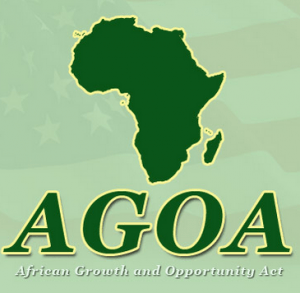AGOA non-oil trade with Africa grows from $1.4b to $4.1b – US official
 Non-oil trade between African countries and the US under the African Growth and Opportunity Act (AGOA) is said to have grown from $1.4 billion in 2001 to $4.1 billion in 2015.
Non-oil trade between African countries and the US under the African Growth and Opportunity Act (AGOA) is said to have grown from $1.4 billion in 2001 to $4.1 billion in 2015.
The Assistant US Trade Representative to Africa, Florizelle Liser is cited to have said in Cairo, Egypt in the last week that the sectors that had benefitted most from AGOA included automobiles, apparel, footwear, prepared fruits and vegetable, nuts and cut flowers.
Ms Lisser, who was speaking at the African Export-Import Bank maiden Trade and Development Seminar Series, indicated however that, there are constraints affecting the supply-side of the trade relations with the continent, and these, she pointed out include unreliable electricity and transportation, poor ports, lack of transnational highways, and poor access to the Internet, adding that currently Africa accounts for only two per cent of US trade.
She also cited low intra-Africa trade, which results in low economies of scale, and the difficulties faced by African producers in meeting US agricultural and other standards.
According to Ms. Lisser, other Africa-focused trade development initiatives by the US include the Millennium Challenge Corporation (MCC), which has set aside $7.9 billion, or 68 per cent of the total compact portfolio, for Africa.
She noted that the MCC, is the lead contributor to the US government’s trade capacity building assistance to AGOA-eligible countries with $3 billion, and has dedicated 20 of its 33 compacts to African countries.
Other initiatives of the US in Africa, she said, include the Power Africa, the trade-related capacity programme administered under USAID and unveiled by U.S. President Barak Obama in 2013; Trade Africa, the USAID’s initiative to increase internal and regional trade and expand trade and economic ties; and the US Overseas Private Investment Corporation, the government’s development finance institution which mobilizes private capital to address critical development challenges and which provides investors with financing, political risk insurance, and support for private equity investment funds.
A major trade policy of the US government, AGOA was initially enacted on May 18, 2000 until 2008, but was amended in 2004 to expire in 2015 to allow increased market access to some 40 eligible sub-Saharan African (SSA) countries to export approximately 7000 product lines duty free, quota free to the US market.
The US Congress, however, on Thursday, June 11, 2015 renewed AGOA for another 10 years. The agreement will end in 2025. An overwhelming 392 against 32 of members of Congress voted for the renewal, indicating a bipartisan endorsement of AGOA.
However, despite being a major trade policy for the US, beneficiary countries have not been able to take advantage of the policy to drive economic growth. In a May 2015 article by Madjie Simon, the Executive Secretary of the American Chamber of Commerce in Ghana wrote that countries like Kenya, Lesotho and Mauritius provide the bulk of apparel exports under the programme. According to Simon, in 2014, Kenya exported $423 million worth of apparel to the US under AGOA, Lesotho, $289 million; Mauritius, $227 million and Swaziland, $77 million.
So far, African countries altogether export about $1 billion worth of apparel to the US, but there are fears that Africa could lose out on the competition as the US is in negotiations with Asia for a similar non-reciprocal trade preference programme. The fear stems from the fact that Vietnam alone exports $20 billion worth of apparels to the US, and if other Asian countries join the programme, Africa can’t stand the competition.
By Emmanuel K. Dogbevi
Copyright © 2016 by Creative Imaginations Publicity
All rights reserved. This news item or any portion thereof may not be reproduced or used in any manner whatsoever without the express written permission of the publisher except for the use of brief quotations in reviews.
